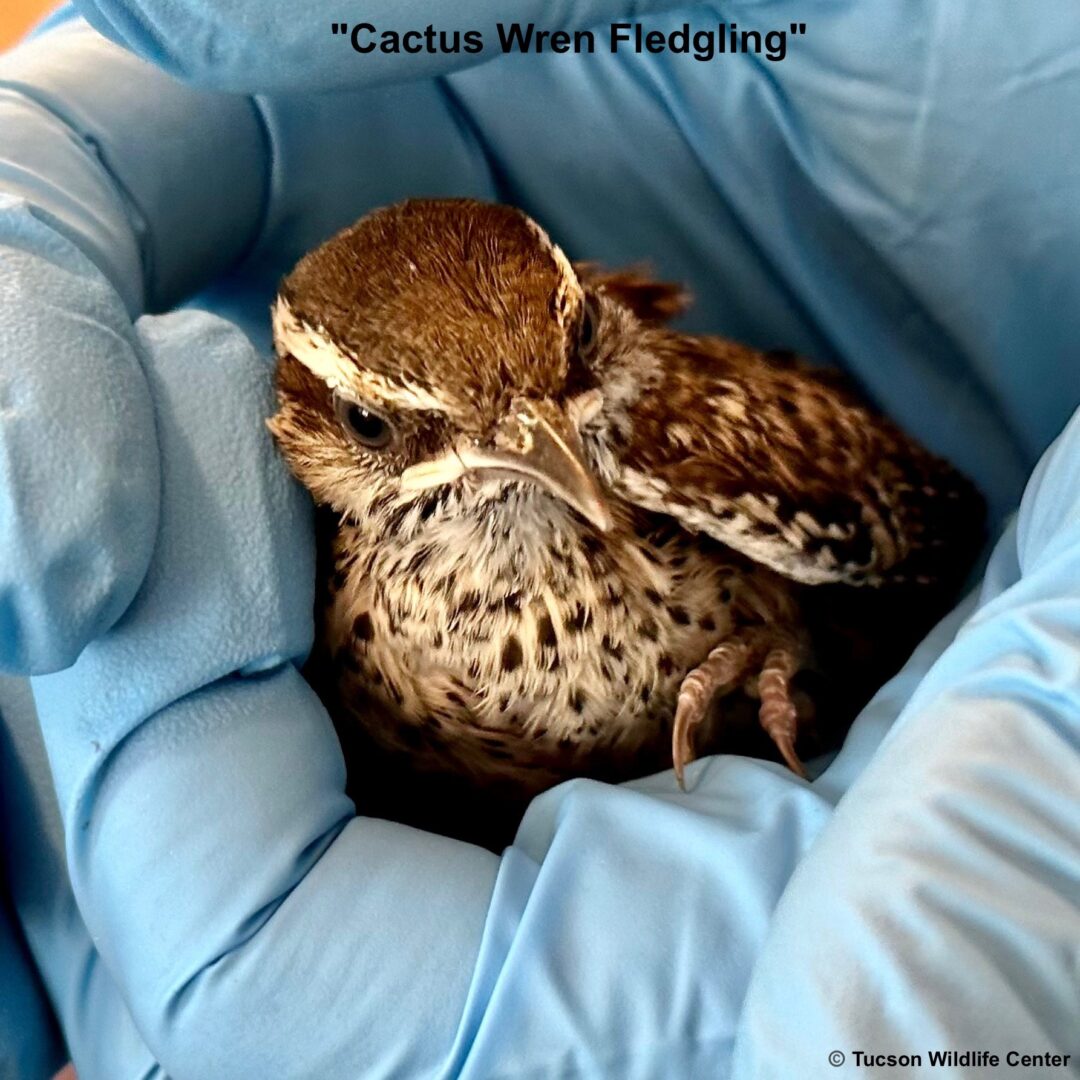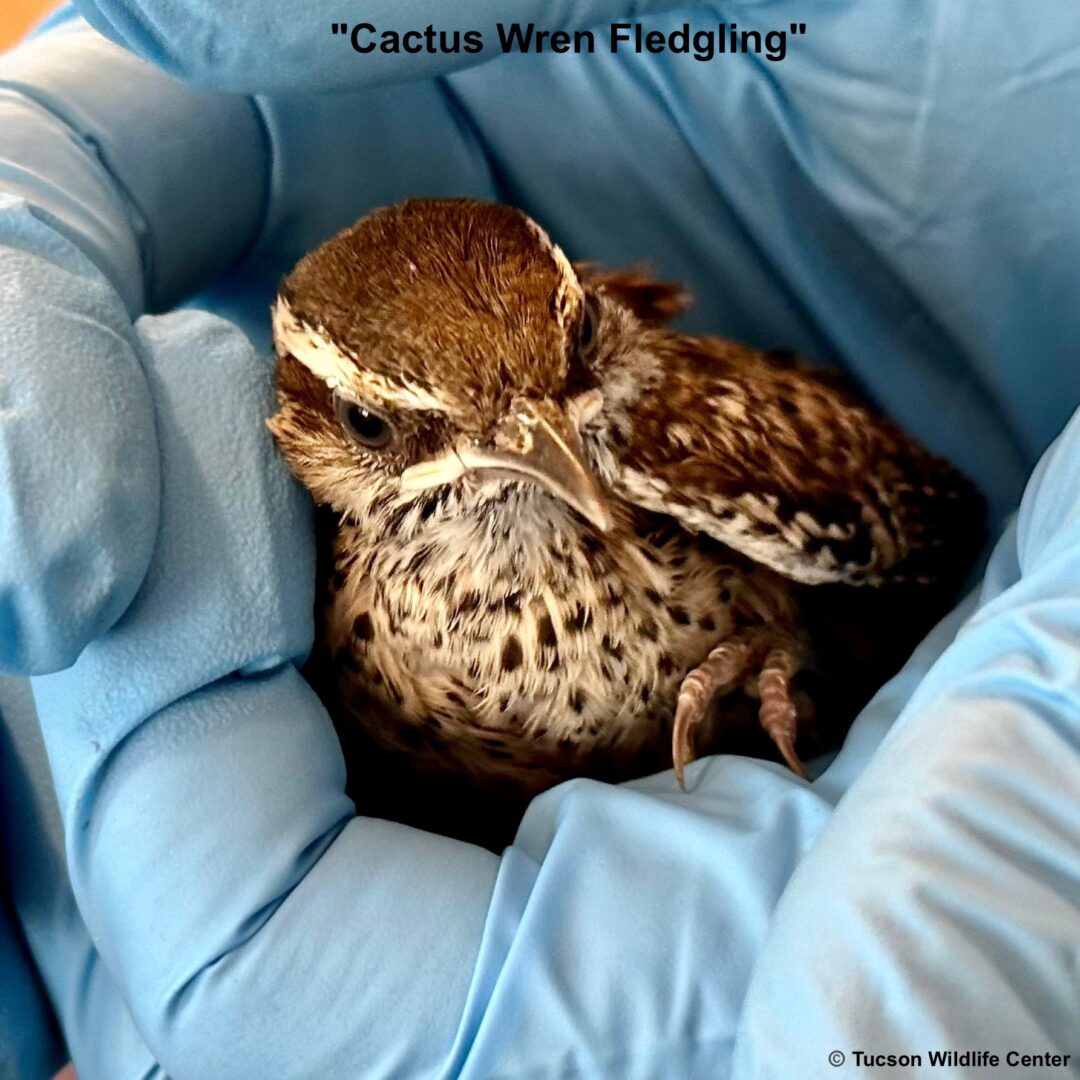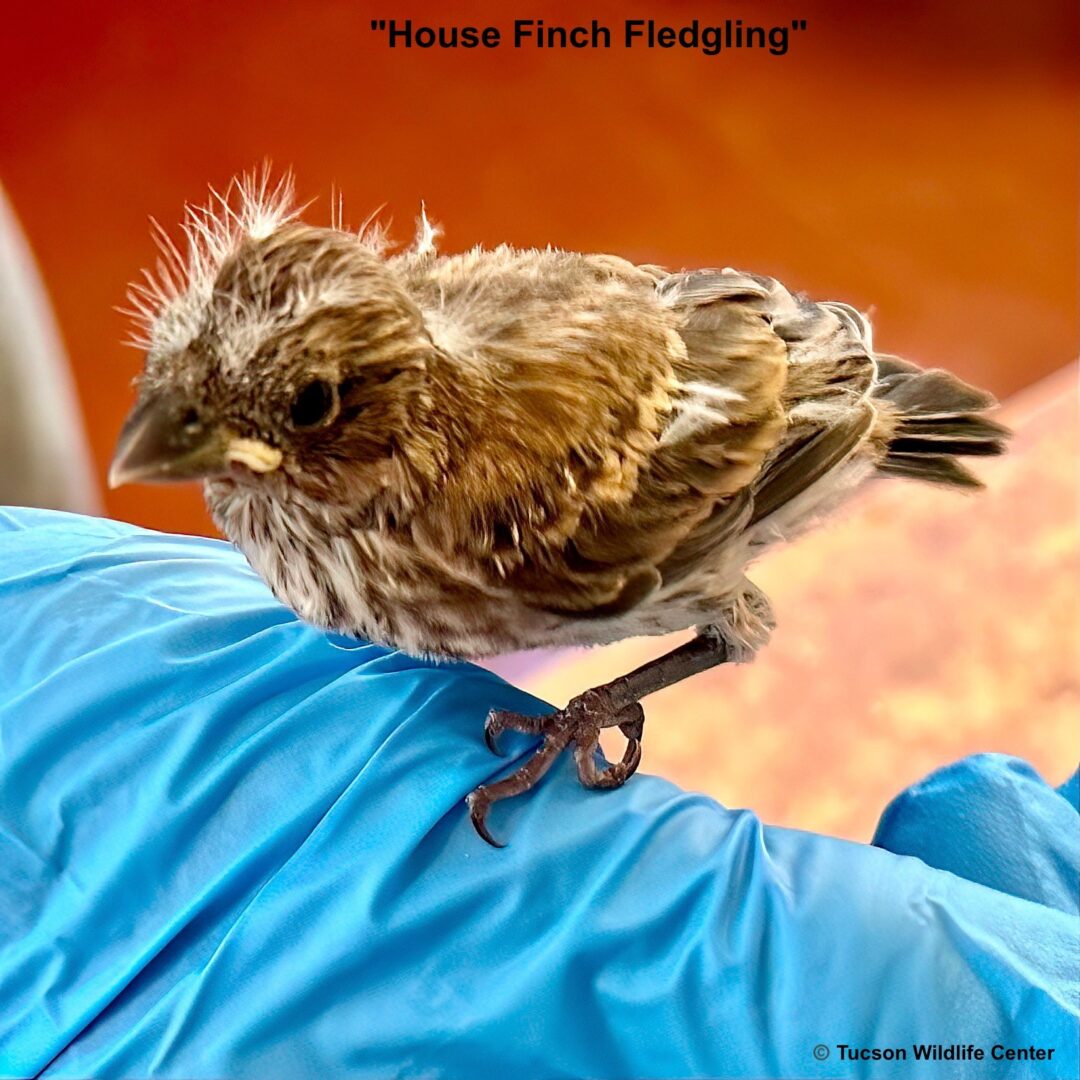
Baby Birds Displaced by Monsoon Storms
This hungry cactus wren fledgling is among many baby birds recently admitted to Tucson Wildlife Center after being displaced from their nests, separated from their parents, or injured by monsoon storms. Due to their small size, baby birds are susceptible to being blown out of their nests and away from their parents during a monsoon. If the storm is severe enough, the nest can be destroyed.
Many concerned residents have called TWC asking what to do with a baby bird they have found on the ground. If the baby has some feathers and is hopping on the ground and fluttering its wings, it is a fledgling and learning to fly. It is normal for a fledgling to be on the ground and parents will continue to feed it. If the young bird looks healthy and is in a safe area, it should be left alone. If it is in an area where you are worried about predators (such as neighborhood cats), you can place the bird on a nearby perch out of harm’s way. Be sure to also keep your pets indoors.
If the baby cannot walk, only has fluff or no feathers, or its eyes are not open, it is a nestling. If the baby appears to be uninjured, it should be placed back in the nest. If the nest is destroyed or too high for you to reach, you can make a substitute nest by poking drainage holes in the bottom of a small container or use a berry basket. Line the nest with grasses and small twigs that will dry quickly. If the baby is an owl or a hawk, you can use a laundry basket. Attach the nest as high as you can to the tree or whatever is nearby the original nest with wire or twine. Remember, the parents will be perching on the edge of the nest as they continue to feed their young, so make sure the new nest is very secure. Put the baby in the nest and watch from a distance for an hour to see if the parents come to feed it. If the parents do not return, call TWC for advice on next steps. (https://tucsonwildlife.com/rescue-faq/)
If you would like to help patients like these baby birds, please click the donate button below.
Another way you can contribute is to visit our “wish list” on Amazon by clicking on the Amazon Wish List button below. We appreciate it, as will all the wild animals in our care!




